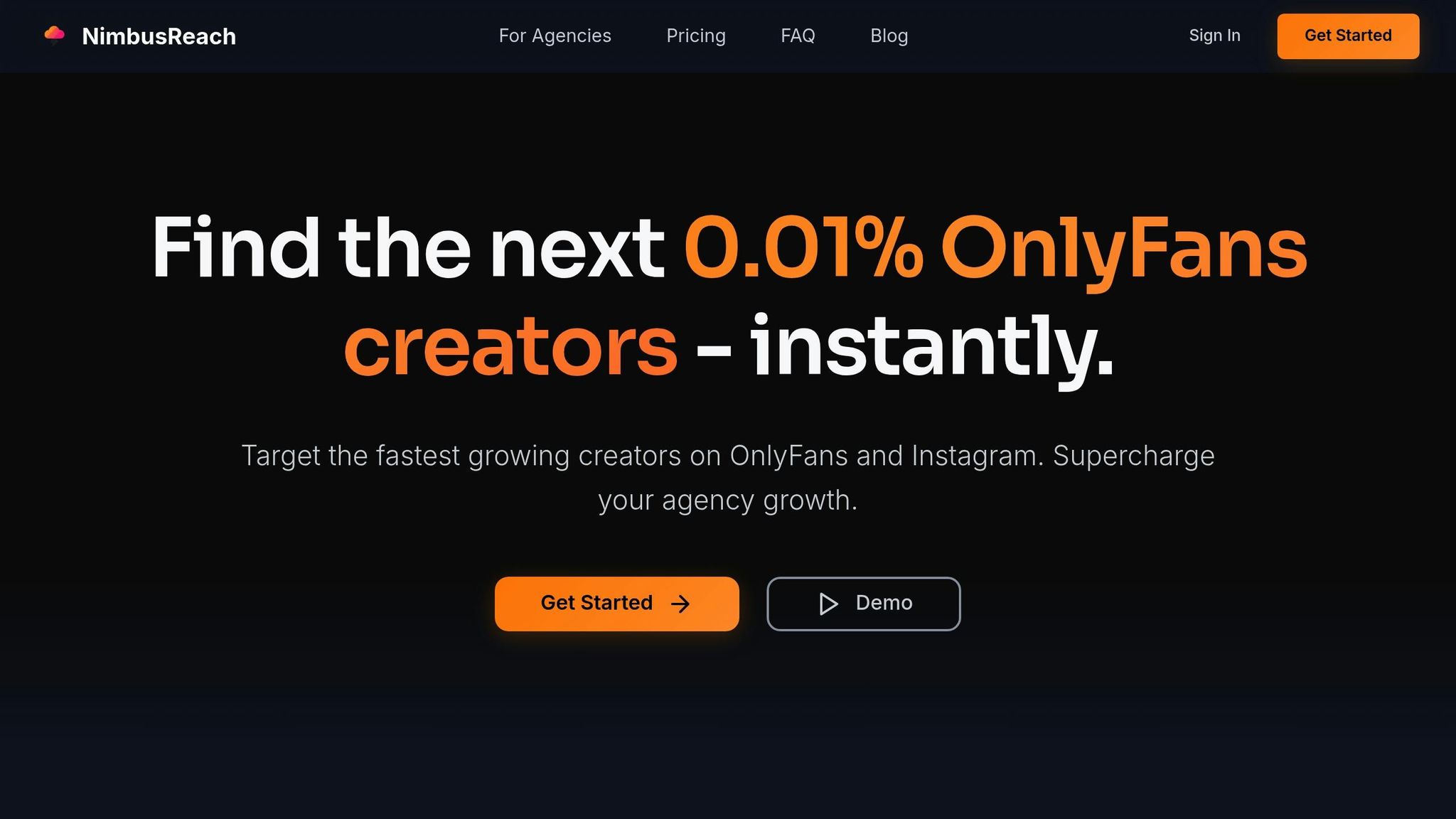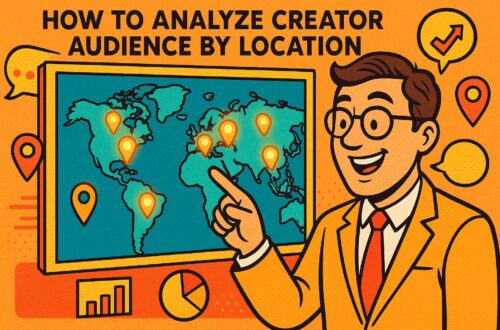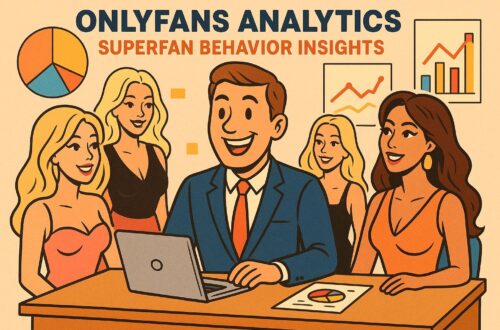Most agencies waste time and resources on outdated scouting methods. They rely on follower counts and surface-level metrics, often partnering with creators who fail to deliver results. Data-driven tools solve this by focusing on meaningful metrics like engagement quality, revenue potential, and audience loyalty.
Key takeaways:
- Manual scouting is slow and inconsistent, with high costs and unreliable results.
- Data tools analyze deeper metrics like earnings growth and audience retention, ensuring better creator matches.
- Agencies can find top talent faster, cut scouting time by 50%, and avoid fake influencers.
Platforms like NimbusReach simplify the process by automating searches, flagging rising talent, and providing real-time insights. Shifting to data-powered scouting isn’t just faster – it ensures better outcomes and long-term growth.
How to Find UGC Creators in 2025
Problems with Manual Scouting Methods
Manual scouting methods can be a major bottleneck, with 47% of talent acquisition teams reporting that manual processes slow their progress. For agencies collaborating with OnlyFans creators, these challenges are amplified due to the unique demands of the industry.
High Time and Resource Costs
Manually scouting talent means sifting through endless profiles, handling tedious data entry, and managing communications – all of which stretch an agency’s limited resources. Add to this the low response rates to outreach and the lengthy vetting process, and scalability becomes a real struggle. On top of that, these time and resource drains make it harder to measure performance accurately, often leading agencies to rely on metrics that can be misleading.
Overemphasis on Basic Metrics
Metrics like follower counts, likes, and comments might seem useful, but they rarely tell the full story. These numbers often fail to separate authentic engagement from artificially inflated stats. This lack of nuanced data leaves agencies making decisions based on surface-level insights, which can lead to missed opportunities and inconsistent results.
Inconsistent Decision-Making
Without standardized criteria in place, manual scouting is prone to errors and inconsistent choices. Recruiters often find themselves bogged down with administrative tasks, leaving little room for building meaningful relationships or focusing on strategic goals. These inefficiencies highlight the pressing need for data-driven tools that can streamline operations and improve decision-making.
How Data-Driven Tools Improve Scouting
Data-driven tools bring precision and efficiency to scouting by replacing guesswork with analytics and automation. Instead of relying on manual processes, these tools offer scalable insights, making it easier to identify creators who truly stand out.
Accurate Creator Performance Analysis
Rather than focusing on superficial metrics like follower counts, data-driven tools dive deeper into meaningful performance indicators. They analyze engagement quality, audience retention, and steady revenue growth to provide a more reliable picture of a creator’s potential.
For example, these tools can distinguish between creators whose earnings have consistently increased over the past six months and those experiencing short-lived spikes. This helps agencies prioritize creators with sustainable growth patterns over fleeting trends.
Additionally, these tools deliver detailed demographic insights – such as age, location, and spending habits – allowing agencies to align creators with campaigns that target the right audience. This not only improves the success of the campaigns but also enhances the satisfaction of the creators involved.
Finding High-Value Creators
Advanced algorithms take the guesswork out of discovering top talent. They can sift through thousands of profiles using multiple criteria in a fraction of the time it would take a human scout. Key factors like engagement authenticity, consistent earnings, content quality, and audience loyalty are all analyzed to pinpoint high-value creators.
These tools also offer advanced filtering options, enabling agencies to search for creators based on specific earnings brackets, geographic locations, or niche markets. At the same time, they can flag profiles with warning signs, ensuring that only the most promising candidates make the cut.
By analyzing growth patterns and engagement trends, these tools can even identify rising talent before they attract widespread attention. Predictive analytics take it a step further, forecasting a creator’s potential by examining their content improvement, audience expansion, and market positioning. This gives agencies an edge in signing promising talent early, well before they become saturated with offers.
Better Scalability and Efficiency
Data tools don’t just improve scouting accuracy – they also make the process faster and more efficient. Automated workflows for outreach, tracking, and screening mean a single scout can evaluate hundreds of creators in the time it used to take to review just a few dozen.
Centralized databases store everything from creator profiles to communication histories and performance metrics, ensuring team members work with consistent standards and avoid duplicating efforts. Automated alerts further streamline the process by notifying scouts when creators meet specific criteria or when existing talent shows signs of declining performance.
These tools also support long-term management. They provide ongoing performance monitoring for signed creators, tracking key metrics like earnings, engagement, and content consistency. This enables agencies to address potential issues early, offering tailored support to maximize success and retain talent.
Real-time dashboards give agency managers an instant overview of the scouting pipeline, showing metrics like outreach response rates, conversion percentages, and average time-to-signing. This data allows managers to continuously fine-tune their strategies and allocate resources more effectively.
Using NimbusReach for Better Scouting

Manual scouting can be a real headache, full of inefficiencies and unreliable results. That’s where NimbusReach steps in, offering a data-driven solution specifically tailored for agencies in the creator economy. Designed with platforms like OnlyFans in mind, NimbusReach focuses on identifying creators with engaged, paying audiences. Instead of relying on surface-level engagement stats, this platform zeroes in on financial performance, helping agencies connect with talent that drives revenue.
Key Features of NimbusReach
NimbusReach is packed with tools that make scouting faster and more effective. Here’s what sets it apart:
- Advanced Search and Filtering: Forget manually scrolling through endless profiles. NimbusReach allows agencies to filter creators by earnings, engagement rates, and niche categories, saving time and effort.
- Fan Devotion Score: This proprietary metric digs deeper than standard engagement stats. By analyzing web-wide signals, it identifies creators with loyal, paying fan bases – helping agencies spot influencers who attract genuine superfans.
- Real-Time Growth Alerts: Agencies get notified when creators hit major milestones, like rapid growth or spikes in engagement. This feature ensures teams can act quickly to connect with rising stars before their competition does.
- Bulk Export Tools: Need to share creator data across your team or track outreach efforts? NimbusReach lets you export data in a clean, organized format, simplifying large-scale scouting operations.
These features address common challenges, like high resource demands and misleading engagement metrics, making scouting more efficient and accurate.
Finding Top Creators with Real Fans
NimbusReach shines when it comes to identifying creators who bring in consistent revenue from dedicated audiences. Instead of chasing high follower counts, agencies can focus on creators whose fans actively support them financially.
The platform’s analytics separate steady revenue growth from temporary spikes, ensuring agencies target creators with proven financial engagement. It also provides detailed audience insights, making it easier to pair creators with campaigns that are a perfect fit.
Thanks to the Fan Devotion Score, agencies can sidestep the pitfalls of inflated metrics and fake influence, ensuring their partnerships are built on genuine audience loyalty.
Making Agency Operations Faster
Manual processes can drain time and resources, but NimbusReach automates and streamlines agency operations. By centralizing creator data and automating routine tasks, it cuts down research time and simplifies pipeline management.
The platform even includes content ideation tools, which suggest strategies based on successful creator patterns. These recommendations help agencies foster stronger, longer-lasting relationships by boosting creator performance and earnings.
Finally, the dashboard offers real-time insights into key metrics like outreach response rates and conversion percentages. This makes it easier for managers to fine-tune their strategies and improve overall results.
NimbusReach isn’t just a tool – it’s a game-changer for agencies looking to scout smarter, not harder.
sbb-itb-bd3d2dc
Manual vs. Data-Driven Scouting: Side-by-Side Comparison
The difference between manual and data-driven scouting goes beyond technology – it reshapes how agencies operate. Manual scouting leans heavily on intuition and time-consuming research, while data-driven methods streamline the process, making it precise, scalable, and reliable. This evolution is pushing agencies toward a more efficient, analytics-driven approach.
Manual scouting demands hours of sifting through countless profiles, often leading to wasted time and missed opportunities. The sheer volume of creators makes it nearly impossible for agencies to scale effectively while relying on traditional methods. For agencies aiming to grow, this manual approach quickly becomes a bottleneck.
Data-driven scouting flips the script. Instead of focusing on surface-level metrics like follower counts, agencies gain access to in-depth analytics that uncover a creator’s true earning potential and audience engagement. This approach allows agencies to onboard creators in under 72 hours, highlighting the stark efficiency gap between manual and data-driven methods.
The scalability of each approach further underscores their differences. Manual methods struggle to scale, as they depend on significant time and labor. On the other hand, data-driven tools can evaluate hundreds of creator profiles simultaneously, maintaining consistent standards without requiring additional resources.
Comparison Table
Here’s a quick look at how manual and data-driven scouting stack up across key metrics:
| Attribute | Manual Scouting | Data-Driven Scouting |
|---|---|---|
| Time Investment | High (hours per candidate) | Low (minutes per candidate) |
| Reliability | Inconsistent, subjective | Consistent, objective |
| Scalability | Limited (difficult to scale) | High (handles large volumes easily) |
| Decision-Making | Intuition-based, limited data | Data-driven, with analytics and KPIs |
| Cost | High (labor-intensive) | Lower (automation reduces effort) |
| Quality of Matches | Variable, often misaligned | High, better creator-agency fit |
| Onboarding Speed | Slow (days to weeks) | Fast (hours to days) |
| Performance Tracking | Manual, prone to errors | Automated, real-time insights |
The financial impact is hard to ignore. Manual scouting’s reliance on labor drives up costs while delivering inconsistent results. Agencies often end up onboarding creators who may not align with their goals, wasting time and risking their reputation. In contrast, data-driven scouting allows agencies to spot and invest in rising talent early, giving them a competitive advantage in a crowded market.
More importantly, data-driven methods focus on creators with superfans – those who drive the majority of agency earnings. Since most revenue comes from a small number of top-performing creators rather than a large pool of mid-tier ones, identifying high-potential talent is key to long-term success.
Ultimately, moving from manual to data-driven scouting isn’t just about saving time – it’s about creating a scalable, future-proof business model that thrives in the ever-changing creator economy.
Practical Tips for Data-Based Scouting
Shifting to data-driven scouting isn’t just about picking up new tools – it’s about adopting a methodical approach that helps you extract meaningful insights from analytics while keeping your workflow efficient. Agencies that excel in this space follow specific practices to turn raw data into actionable strategies.
Set Clear Selection Standards
To eliminate guesswork, establish measurable benchmarks for evaluating creators. Instead of relying on subjective impressions, define specific thresholds that candidates must meet to be considered.
Focus on key metrics like engagement rates, audience authenticity, growth patterns, and revenue potential. For example, you might require a minimum Fan Devotion Score to ensure the creator has a genuine connection with their audience, rather than just an inflated follower count.
Document these benchmarks clearly and ensure your entire scouting team is aligned. When everyone uses the same criteria, you minimize inconsistencies that can derail manual scouting. Once your standards are in place, let the data guide your screening process.
Start Screening with Data
Begin your scouting by leveraging analytics to filter creators in your target niches. Applying your benchmarks upfront allows you to quickly narrow down your candidate pool, saving both time and effort.
Pay close attention to engagement rates. High follower counts with low engagement can indicate inactive audiences or purchased followers – red flags that data-driven tools can easily identify. This ensures you focus on creators who are more likely to deliver meaningful results.
Also, examine growth trends over time. A sudden spike in followers followed by stagnation might signal a fleeting viral moment rather than sustainable growth. Prioritize creators who show steady, organic audience expansion. Once you’ve filtered for quality, keep an eye out for emerging creators to expand your talent roster.
Monitor Rising Talent Early
Agencies that succeed often secure rising talent before they hit their peak. This requires a proactive approach, with continuous tracking rather than waiting for talent to become obvious.
Tools like NimbusReach can send alerts for creators showing early momentum, such as rapid follower growth, increasing engagement rates, or an improving Fan Devotion Score. These alerts allow you to engage with promising talent before they become oversubscribed.
Focus on creators in their early growth phase, as they’re often more open to partnerships and less tied to existing agencies. Established creators may come with higher demands and pre-existing commitments, making rising talent a smarter long-term investment.
Consider maintaining watchlists for creators who show potential but haven’t yet hit all your benchmarks. Regularly tracking their progress ensures you can act quickly when they meet your criteria. This approach helps you secure high-potential talent before they become widely sought after.
Balancing a creator’s current performance with their growth trajectory is essential. A creator with moderate earnings but strong upward momentum might offer more value in the long run compared to someone with higher earnings but stagnant growth. Data-driven scouting tools excel at identifying these patterns – insights that traditional methods often overlook.
Conclusion: Data Makes Scouting Work Better
The creator economy has evolved far beyond the days when agencies could depend solely on instincts and first impressions to discover talent. Manual scouting methods are time-consuming, inefficient, and often inconsistent, which can ultimately hurt your business. These outdated practices leave agencies struggling to keep up in an increasingly competitive market.
Enter data-driven scouting, a smarter alternative that replaces subjective guesswork with actionable analytics. This approach highlights creators with real fan engagement, steady growth, and proven revenue potential. By shifting to a system based on measurable insights, agencies can make faster, more accurate decisions while improving how well creators align with their goals.
Agencies using data-powered platforms have reported cutting scouting time by over 50%, while also recruiting creators who better match their brand and financial objectives. It’s not just about moving faster – it’s about making better decisions. When you focus on creators with high Fan Devotion Scores and authentic audience connections, your agency is set up for sustainable success rather than chasing short-lived trends. This method doesn’t just streamline the process – it lays the foundation for long-term growth.
NimbusReach is a perfect example of how the right tools can transform your scouting process. With its Fan Devotion Score, you can zero in on creators who have real, paying fans rather than being misled by inflated follower counts that don’t drive revenue.
The agencies thriving today are those that recognize the need for professional tools to achieve professional success. They’ve moved away from a "gold rush" mindset and embraced structured, data-backed strategies that consistently deliver results. By setting clear selection criteria, using analytics to screen creators, and identifying rising talent early, these agencies are building sustainable businesses – not leaving their success to chance.
FAQs
How does using data-driven tools like NimbusReach make scouting faster and more effective than traditional methods?
Data-focused tools like NimbusReach take the hassle out of scouting by automating tasks that would otherwise eat up hours of manual work. These tools dive into creator performance metrics – like audience engagement and content reach – to pinpoint top talent with precision and speed.
With the power of real-time analytics, agencies can make smarter decisions, ensuring creators are a perfect fit for their objectives. This approach not only cuts down on time but also boosts efficiency by zeroing in on creators who align seamlessly with your agency’s goals.
What key data points help agencies find the right creators more efficiently?
Data-driven tools play a key role in helping agencies connect with the right creators by analyzing a variety of important metrics. These include audience demographics – such as age, gender, and location – along with engagement rates and reach, ensuring that creators resonate with the intended target audience. Beyond that, metrics like authenticity, click-through rates, and conversion rates shed light on a creator’s ability to genuinely influence and drive tangible results.
Agencies also consider data like traffic volume, bounce rates, and average session duration to gauge how engaging and relevant a creator’s content is. By zeroing in on these metrics, the process of scouting creators becomes much more efficient and grounded in informed decision-making.
How can agencies use data to discover and connect with up-and-coming creators sooner?
Data-driven scouting tools empower agencies to discover up-and-coming creators by analyzing vast amounts of activity, engagement trends, and growth metrics in real time. These tools can identify creators who are gaining followers quickly or seeing a surge in engagement, often before they hit the mainstream. This early insight gives agencies the opportunity to connect with rising talent before others catch on.
With the help of predictive analytics, agencies can take it a step further by forecasting a creator’s potential future performance based on past data. This helps them make smarter decisions about where to invest their resources, ensuring their choices align with their objectives and giving them a competitive edge in a crowded market.





